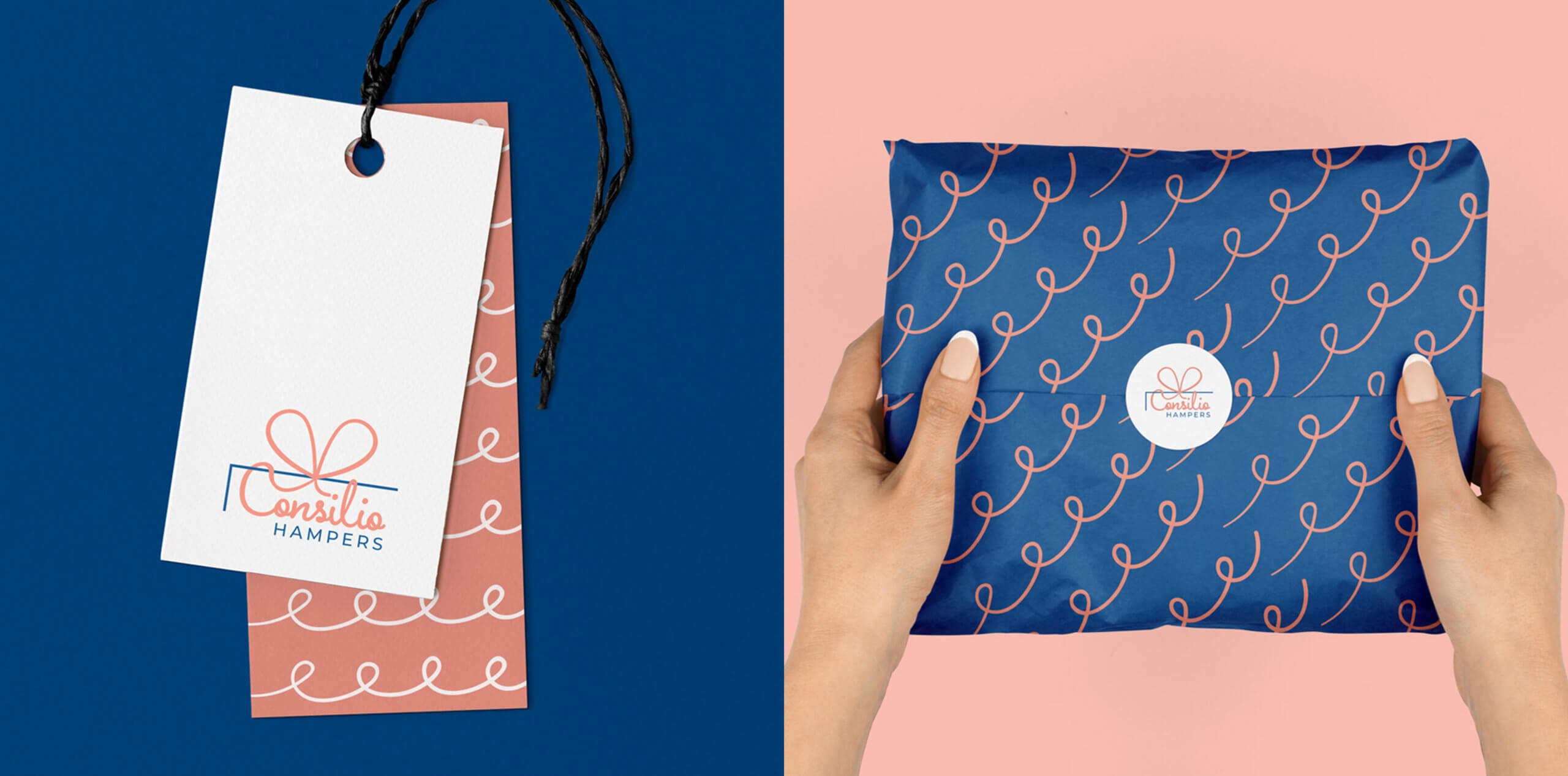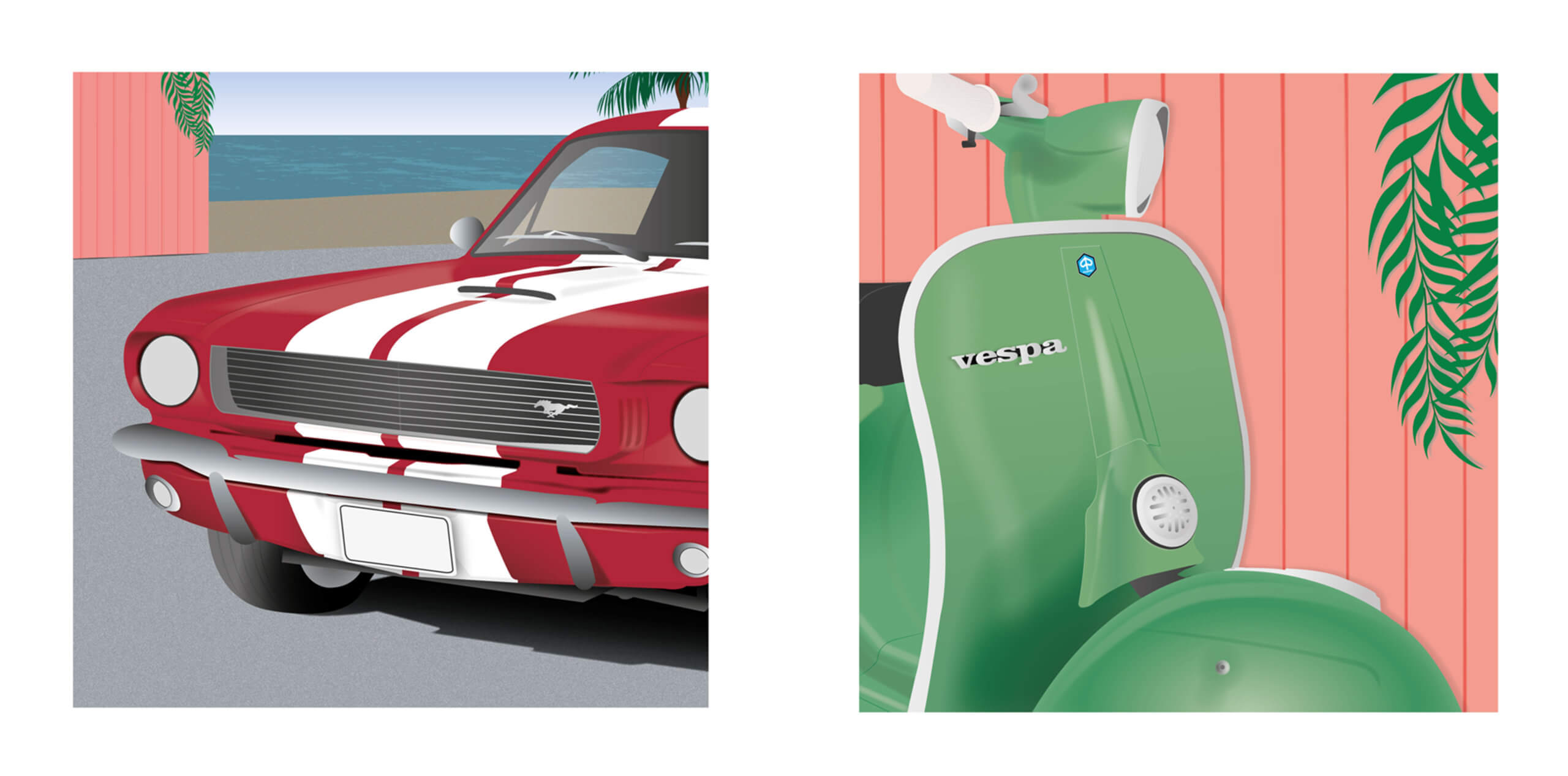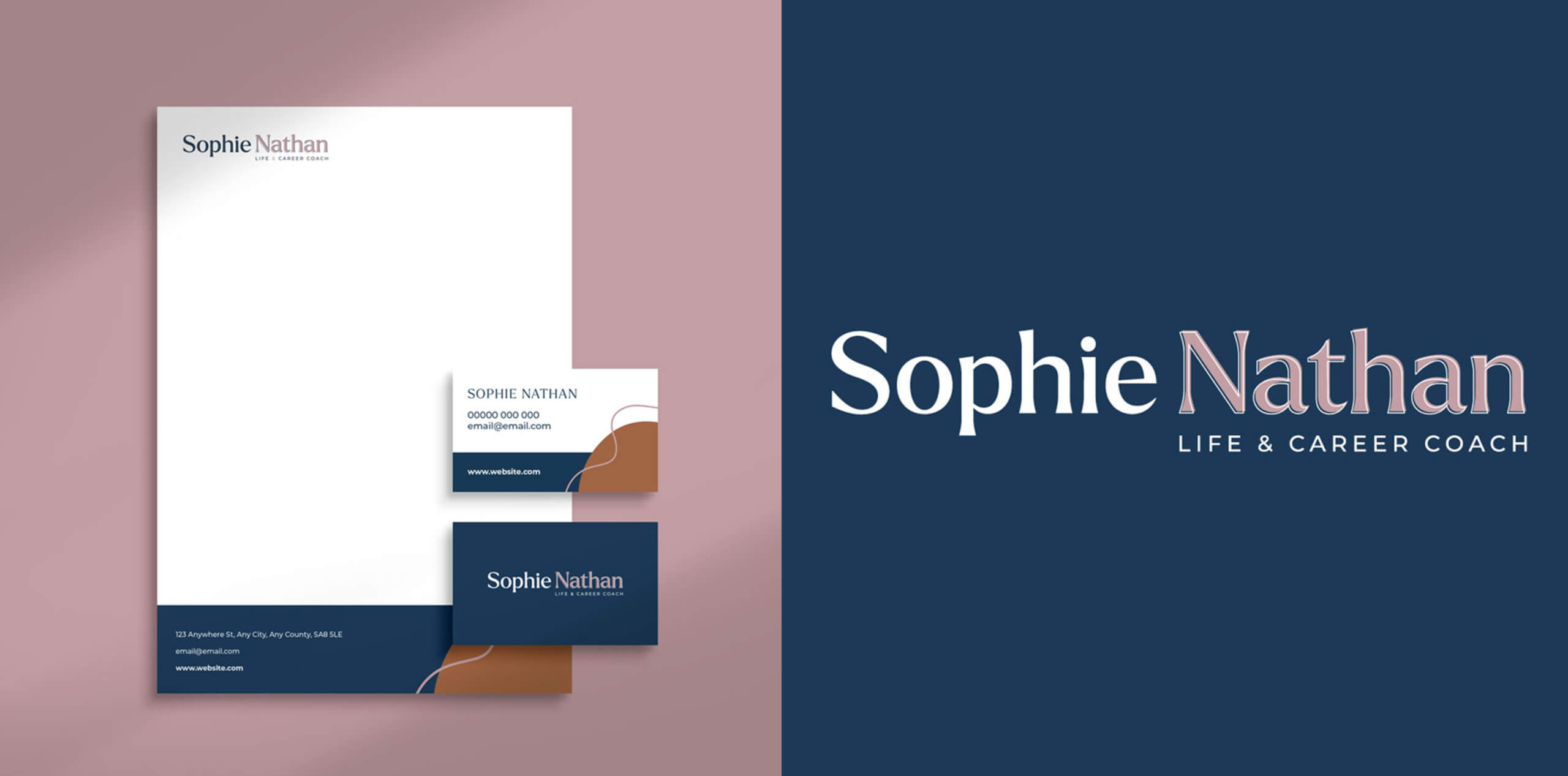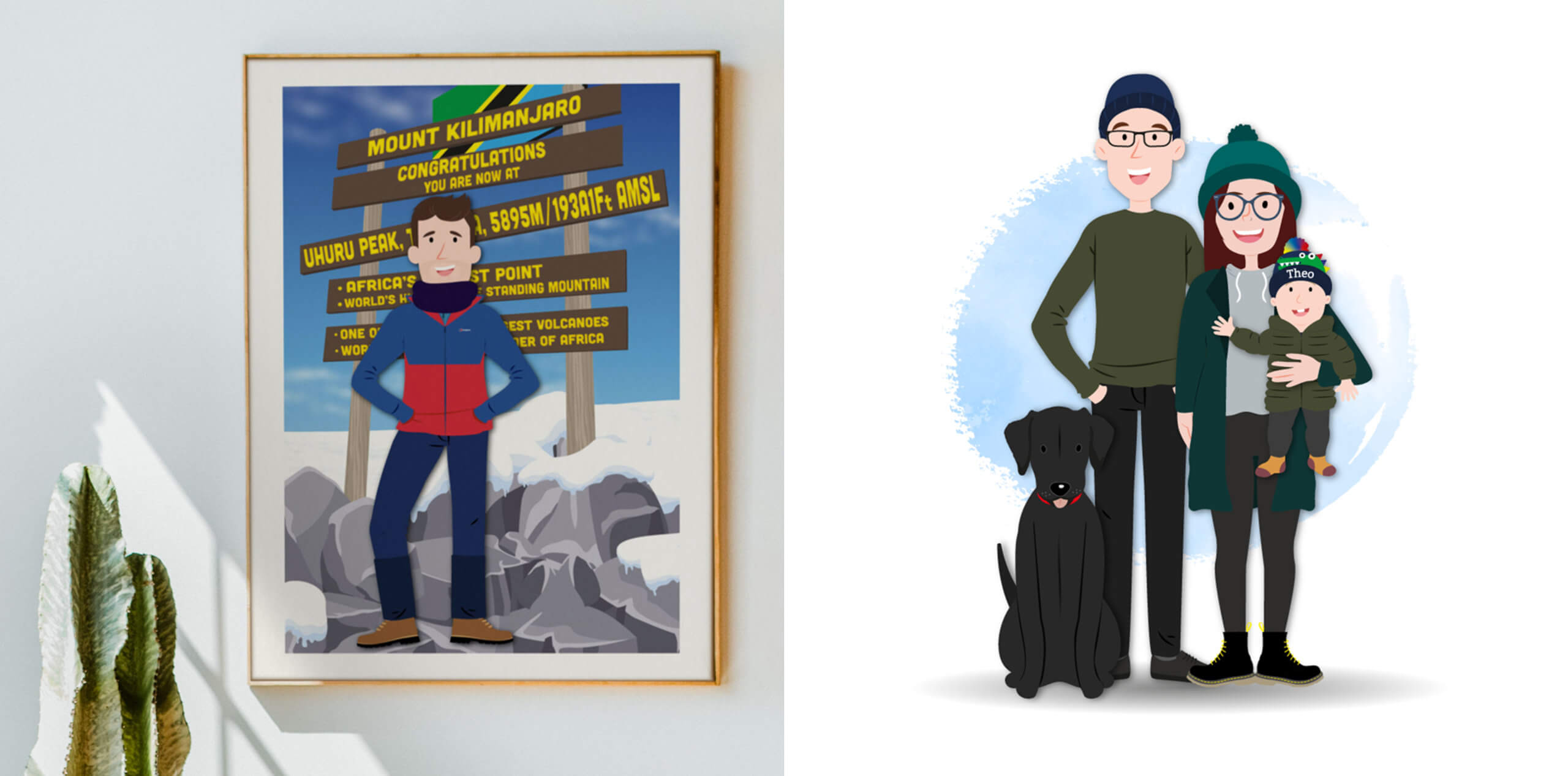Emily Bratby is a multi-skilled freelance graphic designer and illustrator who has experience of working both in a creative agency and in-house. Since going freelance in 2020, Emily has been focused primarily on branding projects and developing her illustration portfolio. She spent her time during lockdown experimenting with analogue and digital illustrative techniques and believes this has fed into her design work and can add another dimension to client projects.
Emily graduated from Staffordshire University and was offered her first job at her degree show after talking to a Managing Director from a local marketing and design agency. She spent the first six years of her career in this role, developing a wide range of skills by learning on the job, honing her craft and proactively building her knowledge through online tutorials and research. Working in what was initially a small team gave Emily a good grounding in all aspects of agency life including account management, social media, branding, and digital and print design. She taught herself to use html, Word Press and google analytics, developing an impressive range of marketing skills.
Having subsequently worked in-house for a financial services company she believes her prior agency experience meant she could bring excellent organisation and project management skills to the role. Emily feels there’s benefits to working in both in-house and agency. She enjoyed the variety of clients she encountered in an agency but felt she had more ownership and was able to develop a brand further when working for one company.
She also enjoys collaboration, working with different people, and loves getting stuck in and learning new things. Her top tip for graduate designers who are starting their careers is, it’s important, “to understand you haven’t stopped learning. You never stop learning as a designer, things are changing so rapidly and there’s always something new to discover.”
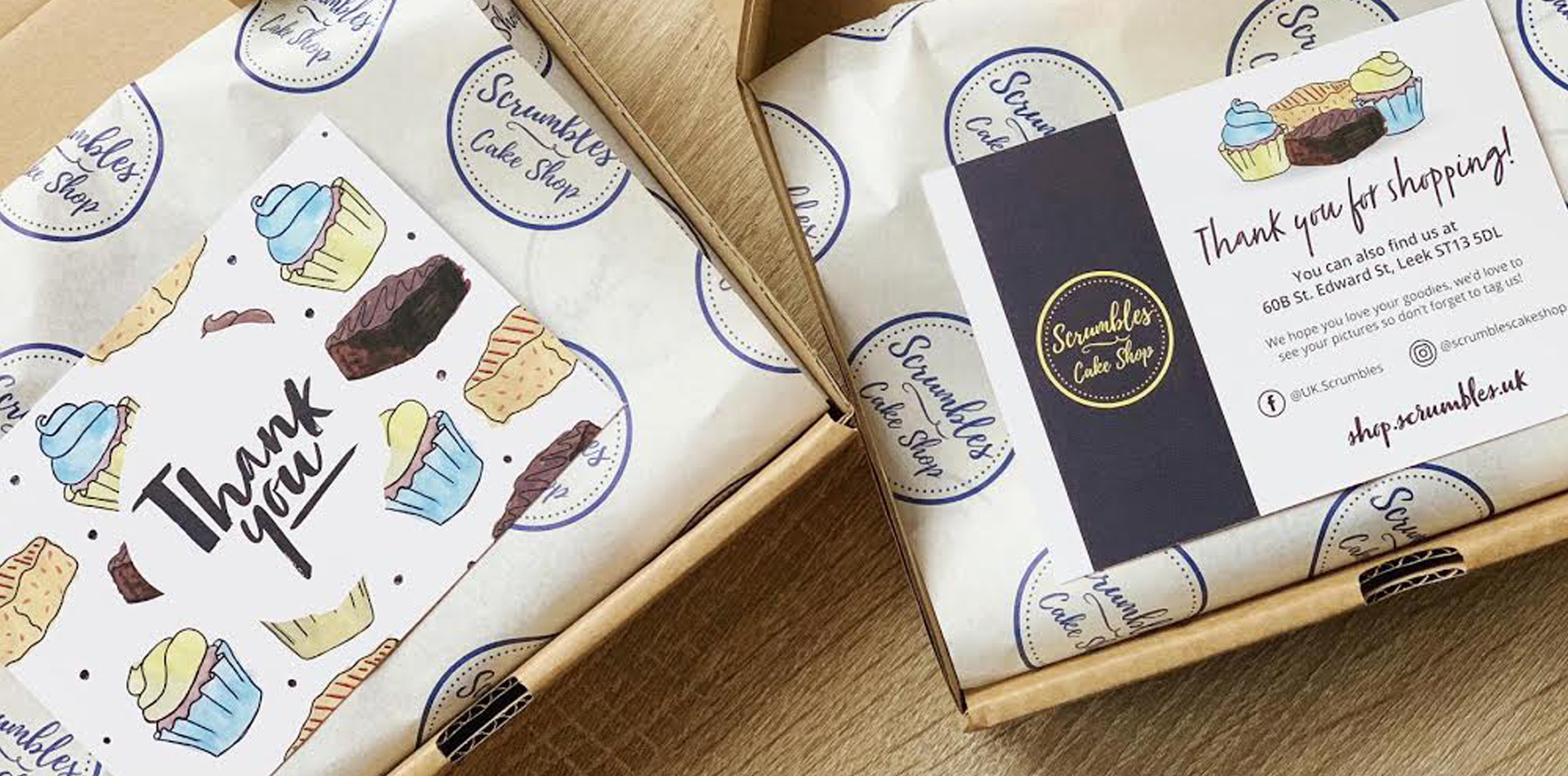
We chatted with Emily to hear about her experiences working with women in the design industry and advice for new graduates.
When did you decide to become a designer?
At school I was extremely passionate about art but understood that it takes long time to develop a steady career in that field. I came across a college course in Graphics and Digital Media which offered some fine art-based elements and fell in love with Graphic Design from there!
Can you tell us about your career path and how you got to where you are now.
At my exhibition at the end of my University course, I was lucky to get talking to a Director of a Staffordshire-based creative agency who offered me the chance to be an account manager. During my short time in that role, I was able to assist with design on several projects, which eventually led me to becoming a fully-fledged designer. After working at the agency for over 5 years, I wanted to see what it would be like working in-house in a sector that I hadn’t designed for before, which led me to a design role in a marketing team in a financial services company. After working in-house, it seemed natural that I should take the plunge and go freelance. I absolutely love working freelance and have developed some wonderful relationships with clients from across the country in a huge variety of sectors!
How have you developed throughout your career?
Working in a real-world setting with actual clients has pushed me to work harder and be a better designer. I have developed so many skills that I didn’t learn at university, from how to design for the web to working with clients to get the best result for both of us. I always strive to design something that I can be proud of. Since starting my career as a designer, I’ve also developed my art skills and use my design knowledge of layout and shape to create mixed media abstract art. These art skills can, in-turn, be translated back into my design projects and sometimes unlock the charm that a project was missing.
What do you enjoy most about being a designer?
It goes without saying that I just love being able to be creative every day, but I also love building relationships with clients. Just because a client isn’t knowledgeable about design, doesn’t mean they don’t bring anything to the table – they know their business inside-out! I also enjoy collaborating with marketing teams. After all, two heads are better than one and collaboration can lead to forward thinking campaigns.
Do you think being a woman has had an impact on your career?
During my university education my courses often had more males than females. However, during my career I have been extremely lucky to work in predominantly female teams and in environments that were always very positive about gender equality. At both school and college, I had inspiring female teachers and in my first agency role I worked in a team with an excellent female Studio Manager who then progressed on to become Creative Director.
In your experience, do you think there is gender equality across the design industry today?
Historically, the design world has always been saturated with men. During my education I always learnt about designers such as Paul Rand and Stefan Sagmeister. However, since the boom in social media I think it is easier to find female designers. There are also more people talking about inequality for women, which is starting to have a positive impact within the industry and I’m definitely starting to see positive changes.
If you could go back to the beginning and start your career again what would tell your younger self?
I would say: it’s OK that you’re not a great designer yet because the experience you get through your career will develop your skills and mould you into a multi-skilled designer. Never give up working hard, and don’t be scared to take risks.
And do you have any words of advice for women considering a career in design today?
Don’t let the prospect of inequality get you down. The more amazing female designers we have in the industry the better! Criticism and disagreements about design work will inevitably happen during your career but always take it constructively and seek ways to develop yourself as a designer. Don’t underestimate yourself, stay creative always, work hard and never stop developing your skills.
Where do you see yourself in 5 years’ time?
I would love to take the skills I have developed throughout my time in an agency, in-house and freelance to become a creative director. I love collaborative work and I think I would be very comfortable in this role.
Which female designer has most inspired you?
I don’t want it to sound like a cliché, but Paula Scher has always been a huge influence for me. My dad collects records, and owns several albums that Scher designed that stuck in my mind. Her work for The Public Theatre is iconic and instantly recognisable (and I have to admit, when I saw the original Bring in ‘da Noise, Bring in ‘da Funk poster in the MoMA in New York, I got a little over excited!) Her designs are always full of emotion. You can tell exactly what mood she is trying to evoke from her typography. Her approach resonates with me, and I love the fact that she’s not afraid to use other media such as painting to create her designs.
Finally, can you recommend 3 female creatives currently working in the industry who you find inspiring!
- Kate Windsor, Artist & Textile Designer based in Stoke-on-Trent: @katewindsorartandtextiles
- Pip Greeves, Print Maker based in Bristol and Stoke-on-Trent: @printedbypip
- Emily Crabtree, Ceramicist and owner of The Creative Flamingo, a small art studio based in Stoke-on-Trent: @thecreativeflamingo1

